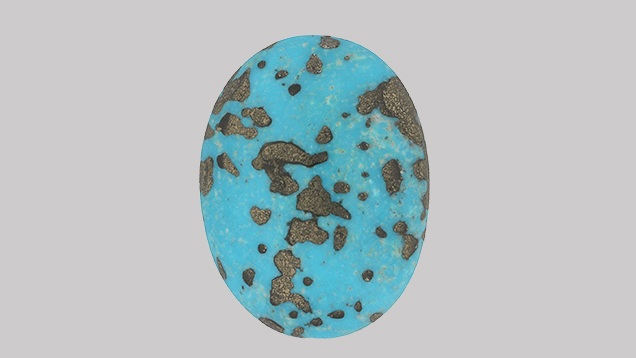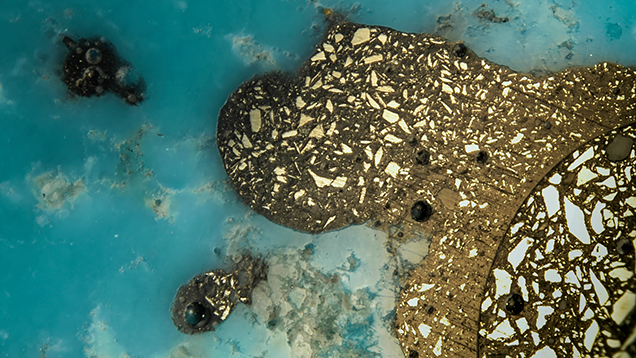Turquoise with Simulated Matrix

The Carlsbad laboratory recently examined a 78.60 ct greenish blue oval bead with patches that contained fragments of a metallic material in dark matrix (figure 1). Standard gemological testing of the greenish blue areas showed properties consistent with turquoise, including a refractive index of 1.60. Microscopic observations revealed the typical visual characteristics of turquoise: blue and white mottling, a granular texture, and a waxy luster with no evidence of dye. Raman analysis confirmed the metallic material was pyrite, and infrared spectroscopy indicated the greenish blue material was turquoise.
Upon closer investigation using a standard gemological microscope, it became clear that the pyrite was composed of irregular and angular broken fragments suspended in a fine-grained black matrix. In addition, each dark patch displayed well-defined boundaries with hemispherical voids, presumably gas bubbles that had been cut through during polishing. Interestingly, one patch showed a discontinuity between two different shades of color and textures of the pyrite in black matrix (figure 2). Based on our observations, we believe these patches were formed by filling the cavities of the turquoise with a mixture of crushed pyrite crystals and a type of polymer resin. The treatment might have involved one or more filling episodes, which could explain the discontinuity seen in one of the patches. The filled turquoise was later polished into the finished product we observed.

In the past, we have seen a variety of treatments for turquoise, but this was the first example of an artificial pyrite-containing matrix examined at the Carlsbad laboratory.



